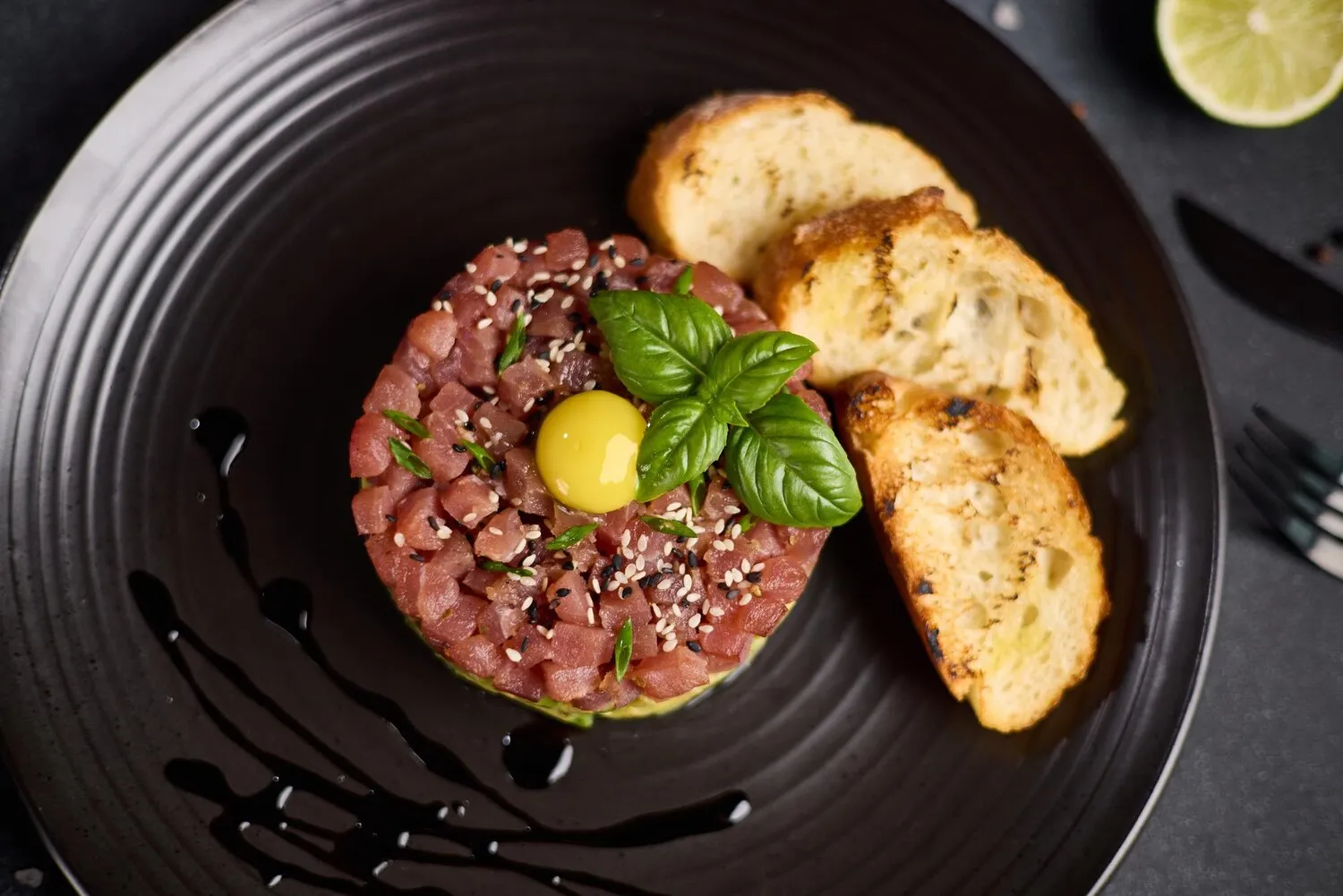
Steak Tartare
Raw ground beef dish. It appears frequently in user reviews, pointing to its popularity.
Nutrition Facts
* The % Daily Value (DV) tells you how much a nutrient in a serving of food contributes to a daily diet. 2,000 calories a day is used for general nutrition advice.
The exact origins are debated, with some associating it with Central Asian horsemen (possibly related to the Tatar people) who supposedly tenderized meat under their saddles. However, the modern iteration of Steak Tartare is more closely linked to early 20th-century French cuisine, influenced by earlier raw meat dishes such as 'Tartare steak' served with tartar sauce.
Steak Tartare is often seen as a sophisticated and somewhat daring dish, associated with classic French cuisine and a certain level of culinary adventurousness. Its preparation and presentation are often meticulous, emphasizing the quality of the ingredients.
Quality Ingredients are Key
The dish's reliance on raw beef necessitates sourcing the highest quality, freshest meat from a reputable butcher. Food safety is paramount.
Restaurant Presentation
In restaurants, Steak Tartare is often prepared tableside, allowing diners to customize the seasoning and ingredient ratios to their liking. This theatrical element adds to the dining experience.
Debate Over Egg Yolk
The inclusion of raw egg yolk is a matter of personal preference, and some recipes omit it entirely. Its role is to add creaminess and bind the ingredients together.
Steak Tartare presents a complex interplay of savory, tangy, and rich flavors, heightened by the textural contrast between the finely chopped raw beef and the accompanying ingredients.
The primary flavor is the rich, clean taste of high-quality raw beef, which is usually lean. This is balanced by the sharpness of ingredients like capers, onions (often shallots or red onion), and mustard (Dijon is common). Worcestershire sauce adds umami depth. Egg yolk contributes richness and creaminess. Hot sauce or freshly ground black pepper provide a subtle kick. Herbs like parsley or chives add freshness and herbaceous notes. Lemon juice or vinegar can provide acidity. The specific combination and ratios of these ingredients vary depending on regional variations and personal preferences.
Source the Best Beef
Use only the freshest, highest-quality, lean cut of beef, ideally from a trusted butcher who understands the dish. Ask about the beef's origin and handling practices.
Keep Everything Cold
Maintain a cold chain throughout the preparation process. Keep the beef refrigerated until immediately before chopping and mixing. Chill all ingredients and utensils.
Chop, Don't Grind
Finely chop the beef by hand rather than grinding it. Hand-chopping preserves the texture of the meat, while grinding can make it mushy.
Serve Immediately
Once prepared, Steak Tartare should be served and consumed immediately. Do not let it sit at room temperature.
Consider Food Safety
Be aware of the risks associated with consuming raw meat. Individuals who are pregnant, elderly, or have compromised immune systems should avoid Steak Tartare.
Explore additional Belgian dishes and restaurants
Explore BelgianDiscover top dining spots and culinary experiences in Namur.
Explore NamurLearn more about the food culture, restaurant scene, and culinary heritage of Belgium.
Explore Belgium
